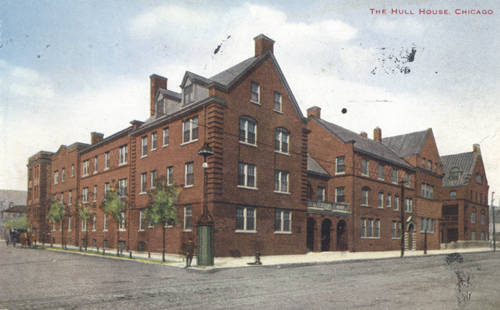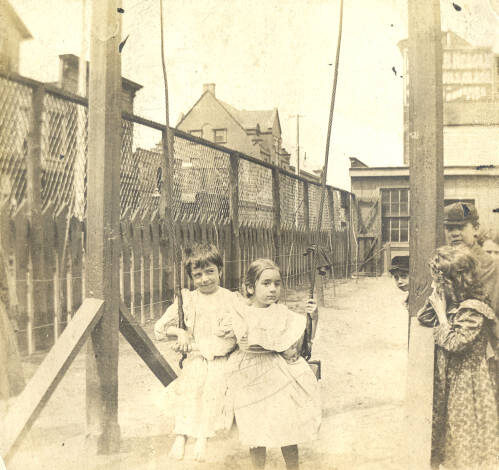UIC and Urban Renewal Timeline
By: Emily H., October K., Sam K., Madeline L. & Ulises M-G.
What is Urban Renewal and Slum Clearance?
The ideas of Urban renewal and urban redevelopment were formulated through city planners and government officials who sought to replace demolished homes and deteriorating neighborhoods with more upscale complexes and business attractions (Alexander Von Hoffman). Eminent domain was a primary tool for the government to forcefully displace minority populations from the inner core of the city, and move forward with demolishing their properties to build on vacant lots. These policies were driven by the fear of cities being decentralized and downtown districts losing significant portions of tax revenue. The issue of the displacement of minority communities was to be addressed by building low-income housing built by the public and private sectors.
In the Housing Act of 1949, proponents of public housing promoted the eradication of slums and the construction of public housing, a process known as urban redevelopment. However, the Housing Act of 1954 promoted urban redevelopment on behalf of those who opposed public housing (those who benefited from private property, such as real estate agents and private investment firms). Urban renewal involved enforcing building standards, promoting the repair of private property through federal loans or second mortgages, and utilizing private investment to construct low-income housing. Urban revitalization is the most often used of these two terms, which are now interchangeable.
Creation of Near West Side and Migration
Long before the intersection of Harrison and Halsted in Chicago was the site of a giant expressway interchange and the University of Illinois Chicago (UIC), this community was the gateway to Chicago’s own immigrant neighborhood. Anchored by the Hull-House Settlement House, which provided social services to the area, the Harrison-Halsted neighborhood was home to numerous racial and ethnic groups including Russian and Polish Jews, Italians, Greeks, Mexicans, Puerto Ricans, African Americans, and more.
This area is a part of the Near West Side, one of the largest community areas in Chicago. In addition to the area around UIC and Little Italy, today this community area also includes Fulton Market, Greektown, University Village/Maxwell Street, the Illinois Medical District, Tri-Taylor, and the United Center. As of 2022, the Near West Side had a population of 65,581, 43.4% of which is White (Non-Hispanic), 10.3% of which is Hispanic or Latino, 24.3% of which is Black (Non-Hispanic), 17.7% of which is Asian (Non-Hispanic), and 4.4% making up other or multiple races. While the community has a high median income of $106,955, 17.9% of the population has a household income of less than $25,000 a year.
Hull House
Opened in 1889 by Jane Addams and Ellen Gates Starr, Hull-House was Chicago’s first settlement building – a place for immigrants and working-class people to learn how to better integrate into the city.

There were classes on the English language, American government, and employment help, as well as creative skills – such as cooking, sewing, art, and dancing. It was very important to the community, not only for its affordable classes but also for being a safe social space, containing a nursery and kindergarten (1895), theater (1899), gymnasium – with one of the first women’s basketball teams in the city, and even a coffeehouse which provided a social space and networking opportunities for the unemployed.

It was closed on March 28th, 1963 with 11 buildings being demolished. Currently standing are the main Hull home and the Residents’ Dining Hall, having been reinterpreted as a museum dedicated to Jane Addams and the Hull-House Settlement.
UIC & Urban Renewal Timeline
Citations
Chicago Metropolitan Agency for Planning. Near West Side Community Data Snapshot: Chicago Community Area Series. https://www.cmap.illinois.gov/wp-content/uploads/dlm_uploads/Near-West-Side.pdf
Grossman, Ron. 2016. “University of Illinois at Navy Pier Opened in 1946 to Serve WWII Veterans.” Chicago Tribune. July 8, 2016.
Harr, Sharon “Chapter 4: Classroom off the Expressway: A New Mission for Higher Education”
“History of the University of Illinois at Chicago.” 2024. Archive.org. 2024. https://web.archive.org/web/20120804045340/http://www.uic.edu/depts/uichistory/navypier2.html ; https://web.archive.org/web/20120803003547/http://www.uic.edu/depts/uichistory/gibill.html
“Housing Act of 1949.” 2019. American Planning Association. 2019. https://www.planning.org/awards/2014/1949housingact.htm.
Myriam Pauillac, “Near West Side,” in Encyclopedia of Chicago, ed. Myriam Pauillac. http://www.encyclopedia.chicagohistory.org/pages/878.html
Wendt, Paul F. 1956. The Role of the Federal Government in Housing. Vol. 460. Washington, D. C.: American Enterprise Association, Inc.